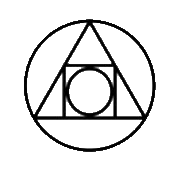
Vedic Astrology Readings & Jyotish Readings by Veno
Veno Astrology



Jyotish - Eye of the Vedas
by Veno
In the Vedic tradition we learn that there are four aims of life for human beings – Dharma (duty or purpose, aligning yourself), Artha (wealth or sustenance), Kama (enjoyment, fulfilling desires) and Moksha (liberation, freedom from delusion).
The natal horoscope shows us a map or picture of how a person may be relating to these four aims of life according to whatever karmas they have accrued in their past lives.
Ideally an astrologer is trying to understand what an individual's relationship is to these 4 aims of life, and how that individual might bring more balance into their lives keeping in mind these four Aims.
In Brihat Parashara Hora Sastra and other classical texts we learn that Jyotish was given to us by the Supreme Divine Being for our greatest welfare and to help alleviate suffering.
Suffering might be happening for a person on any plane of life whether It is physical, mental, emotional. Jyotish is a tool to help relieve the fundamental root of all suffering, which is the existential pain of feeling separated from Divine. The opposite to that suffering is to be engaged in a fufilling relationship with Divine. Jyotish has the potential to help guide a person to move towards that direction. Jyotish is a very extraordinary science.
In the Vishnu Purana one learns that the Vedas, of which Jyotish is only a small part , has “no beginning” and “no end”. Vedic wisdom is infinite. Jyotish is infinite.
Jyotish as a profession is considered to be a Brahmin profession. In the Vedas we learn that a brahmin is somebody who knows Brahman ie a person who is situated in a particular state of consciousness where they have transcended the opposites, who is not motivated by attachment to the lower desires and drives of the ego, who can perceive universal reality.
In the Vishnu Purana one learns that a person cannot be considered to be a brahmin unless they are doing Gayatri mantra everyday. If one analyzes what a Gayatri mantra is, it is a reverential Praise to the Supreme Being, to that Supreme Source of Light, where the devotee is seeking merciful guidance and illumination.
Recognizing and honoring that Divine Source is the most significant theme in Vedic texts.
Jyotish is only “one” limb of the Vedas. The more one explores and learns about the different limbs of the Vedas, one realises how everything is deeply connected. Ayurveda becomes relevant if an astrologer is looking at health in a chart, Yoga and meditation becomes relevant if an astrologer is looking at spirituality in a chart. Mantras become relevant if an astrologer is looking at remedies and spirituality in a chart. Vasthu becomes relevant if one is looking at property in a chart. Mythology contained in the Vedas about the different deities is the only way we get any idea about the nature of planets or constellations (nakshatras).
In the last few thousand years the Supreme being incarnated himself as Ved Vyasa and other sages to bring us Vedic knowledge in written form. Throughout the ages the Supreme Being is always incarnating in a variety of avataric forms to teach, instruct, to defeat the enemies to understanding, to establish Highest Dharma, to reawaken our connection with the Vedas.
In the Vishnu Purana we learn that the Vedas are the highest truth in the universe. In the Srimad Bhagvatam we learn in its opening sloka that Lord Krishna who is non different from Vishnu is the Absolute Truth, the primeval cause of all causes. that he imparted Vedic knowledge into the heart of Lord Brahmaji. One of the first revelations is that one can meditate on him, the Supreme lord Krishna who is the Absolute Truth. For a person who wants to learn Jyotish or anything remotely Vedic this is a wonderful place to begin.
Om Tat Sat